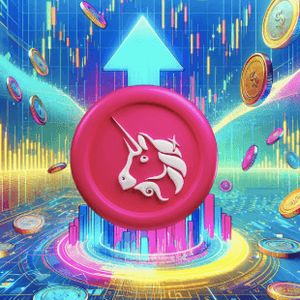The Investment Case For The Onchain Economy
7 min read
Summary Blockchain technology is maturing, and the adoption of digital assets is extending well beyond retail speculation. NODE provides access to the leading public companies and investment vehicles shaping the digital asset economy, guided by a hands-on approach that adapts to market shifts. As of early 2025, global crypto ownership reached 660 million, up from 106 million in 2021—a four-year CAGR of nearly 60%. While NODE is an equity strategy, it can allocate up to 25% of assets to regulated digital asset instruments, such as exchange-traded products, via a wholly owned subsidiary. [[NODE]] provides access to the leading public companies and investment vehicles shaping the digital asset economy, guided by a hands-on approach that adapts to market shifts. The Fund may invest most or all of its net assets in Digital Transformation Companies and/or Digital Asset Instruments but does not invest directly in digital assets or commodities. Digital asset instruments may involve risks from investing in digital asset ETPs, including extreme market volatility and limited investor protections, as these ETPs are not registered under the Investment Company Act of 1940 or the Commodity Exchange Act and do not offer the investor protections provided under those Acts. Investing in the Infrastructure of the Onchain Future The global economy is shifting toward a new digital foundation. Blockchain technology is maturing, and the adoption of digital assets is extending well beyond retail speculation. Today, the companies integrating, enabling, and building on digital asset infrastructure are increasingly relevant to broader capital markets. The VanEck Onchain Economy ETF ( NODE ) is an actively managed strategy designed to provide diversified equity exposure to these companies—those operating at the intersection of blockchain, traditional finance, infrastructure, and computing The Case for the Onchain Economy Digital asset adoption continues to grow at a rapid pace. As of early 2025, global crypto ownership reached 660 million , up from 106 million in 2021—a four-year compound annual growth rate ((CAGR)) of nearly 60% . Institutions are also getting more involved. Since early 2020, the value of bitcoin held by public companies has skyrocketed from under $400 million to more than $56 billion. This does not even include exchange-traded products (ETPs) and crypto-focused funds, representing another growing trend toward regulated exposure. Governments are also participating. Some are integrating Bitcoin into treasury management or payment systems, and others are launching government-run mining operations. The onchain economy is expanding across industries, countries, and political systems. A Broader, Equity-Based Approach NODE invests in companies involved in the digital asset space, not the tokens themselves. Instead, it provides access to a wide array of companies operating in the digital asset economy, spanning ten categories that include: Crypto-native businesses (e.g., exchanges, miners, asset managers) “Holders”, companies where bitcoin or other digital asset holdings comprise a meaningful share of enterprise value Data center operators increasingly servicing AI and blockchain demand Energy and infrastructure providers enabling digital industry growth Consumer platforms and fintech embedding blockchain in financial services Semiconductor and hardware manufacturers supplying critical inputs This diversified approach allows NODE to target the economic impact of blockchain technology through the equity markets, where business models, governance, and financial disclosures are familiar to institutional investors. Active Management Informed by Market Cycles * NODE integrates a systematic view of bitcoin’s market cycle into its portfolio construction. These cycles have historically influenced market sentiment and price behavior, especially the ‘halving cycle’ where bitcoin mining rewards are reduced by half. Instead of reacting to price swings, NODE uses consistent signals to guide its investments. These signals include: Net unrealized profits (NUP) Funding rates in derivatives markets Retail engagement (e.g., app store rankings for crypto platforms) Bitcoin cycle These indicators inform category-level weightings and risk exposure. Anticipating bull markets , NODE leans into higher-sensitivity sectors such as miners, exchanges, and crypto-linked asset managers. Positioning for downcycles , the fund tilts toward more stable areas, including infrastructure, semiconductors, and consumer platforms with diversified revenue streams. Active management ensures monthly category and position-level updates , with a full quarterly portfolio review. Exposure to the Bedrock: Bitcoin While NODE is an equity strategy, it can allocate up to 25% of assets to regulated digital asset instruments , such as exchange-traded products (ETPs), via a wholly owned subsidiary. This allows the fund to maintain targeted exposure to Bitcoin, the bedrock of the onchain economy , within a regulated wrapper. The equity portfolio may be more volatile than broader indices like the S&P 500, so Bitcoin exposure can serve as a structural complement. When cycle indicators are favorable, Bitcoin can offer additional upside without materially increasing risk, based on historical return profiles. A Focused, Research-Driven Portfolio NODE typically holds 30 to 60 high-conviction positions , selected from a universe of ~100+ actively monitored companies. All holdings must play a clear role in the onchain economy—whether by generating revenue from digital assets, enabling digital infrastructure, or integrating blockchain into core business operations. The strategy emphasizes: Transparent digital asset exposure Disciplined capital allocation and governance Financial strength and long-term strategic alignment Conclusion The onchain economy is more than a trend—it’s a transformation. NODE is designed to help investors participate in that transformation through a diversified, actively managed equity portfolio focused on the real businesses powering the shift. As digital assets reshape the financial and computing landscape, NODE offers a thoughtful way to allocate funds to public companies building their foundation With over $116 billion in assets under management and a dedicated digital assets research team, VanEck brings institutional infrastructure to an emerging asset class. Important Disclosures * References to Bitcoin market cycles are based on historical data which does not guarantee future results. The Fund may invest nearly all of its net assets in either Digital Transformation Companies and/or Digital Asset Instruments. The Fund does not invest in digital assets or commodities directly. An investment in the Fund involves a substantial degree of risk and is not suitable for all investors. Investors in the Fund should be willing to accept a high degree of volatility in the price of the Fund’s Shares and the possibility of significant losses. An investment in the Fund is not a deposit with a bank and is not insured or guaranteed by the Federal Deposit Insurance Corporation or any other government agency. Therefore, you should consider carefully various risks before investing in the Fund, each of which could significantly and adversely affect the value of an investment in the Fund. An investment in the Fund may be subject to risks which include, among others, risks related to investing in digital transformation companies, digital asset instruments, commodities and commodity-linked instruments, subsidiary investment, commodity regulatory (with respect to investments in the subsidiary), tax (with respect to investments in the subsidiary), gap, liquidity, derivatives, new fund, regulatory, non-diversified, small- and medium-capitalization companies, foreign securities, emerging market issuers, market, operational, active management, authorized participant concentration, no guarantee of active trading market, trading issues, fund shares trading, premium/discount risk and liquidity of fund shares, industry concentration, cash transactions, underlying investment vehicle, and affiliated investment vehicle risks, all of which may adversely affect the fund. Emerging market issuers and foreign securities may be subject to securities markets, political and economic, investment and repatriation restrictions, different rules and regulations, less publicly available financial information, foreign currency and exchange rates, operational and settlement, and corporate and securities laws risks. Small- and medium-capitalization companies may be subject to elevated risks. Digital asset instruments may be subject to risks associated with investing in digital asset exchange-traded products (“ETPs”), which include the historical extreme volatility of the digital asset and cryptocurrency market, as well as less regulation and thus fewer investor protections, as these ETPs are not investment companies registered under the Investment Company Act of 1940 (“1940 Act”) or commodity pools for the purposes of the Commodity Exchange Act (“CEA”). The technology relating to digital assets, including blockchain, is new and developing and the risks associated with digital assets may not fully emerge until the technology is widely used. Digital asset technologies are used by companies to optimize their business practices, whether by using the technology within their business or operating business lines involved in the operation of the technology. The cryptographic keys necessary to transact a digital asset may be subject to theft, loss, or destruction, which could adversely affect a company’s business or operations if it were dependent on the digital asset. There may be risks posed by the lack of regulation for digital assets and any future regulatory developments could affect the viability and expansion of the use of digital assets. Commodities and commodity-linked instruments may be subject to further risks, including tax and futures contracts risk. This risk may be adversely affected by “negative roll yields” in “contango” markets. The Fund will “roll” out of one futures contract as the expiration date approaches and into another futures contract with a later expiration date. The “rolling” feature creates the potential for a significant negative effect on the Fund’s performance that is independent of the performance of the spot prices of the underlying commodity. The “spot price” of a commodity is the price of that commodity for immediate delivery, as opposed to a futures price, which represents the price for delivery on a specified date in the future. The Fund would be expected to experience negative roll yield if the futures prices tend to be greater than the spot price. A market where futures prices are generally greater than spot prices is referred to as a “contango” market. Therefore, if the futures market for a given commodity is in contango, then the value of a futures contract on that commodity would tend to decline over time (assuming the spot price remains unchanged), because the higher futures price would fall as it converges to the lower spot price by expiration. Extended period of contango may cause significant and sustained losses. Additionally, because of the frequency with which the Fund may roll futures contracts, the impact of contango on Fund performance may be greater than it would have been if the Fund rolled futures contracts less frequently. Investing involves substantial risk and high volatility, including possible loss of principal. An investor should consider the investment objective, risks, charges and expenses of the Fund carefully before investing. To obtain a prospectus and summary prospectus, which contains this and other information, call 800.826.2333 or visit vaneck.com . Please read the prospectus and summary prospectus carefully before investing. © Van Eck Securities Corporation, Distributor, a wholly-owned subsidiary of Van Eck Associates Corporation. Original Post Editor’s Note: The summary bullets for this article were chosen by Seeking Alpha editors.

Source: Seeking Alpha



